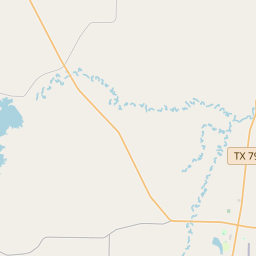Archer County Copper Mines
Historical marker location:






The civilized world first heard of copper in this area from Texas Rangers after an 1860 campaign against Comanches on the Pease River, about 100 miles to the northwest. The Ranger Captain, Lawrence S. ("Sul") Ross, later to serve Texas as governor, had nuggets picked off the surface of the ground and hauled to Austin. In 1861, Assistant State Geologist S. B. Buckley charted the mineral site. The Rangers' ore haul was processed and used in gun caps for Confederate forces during the Civil War. To get more of the needed metal, the Texas Copper Mining & Manufacturing Company was founded on May 28, 1864, but wartime shortage of men apparently prevented recovery of copper at that time. The T.C.M.&M. Co., based in Dallas, sent W. F. Cummings to Archer County in 1880 to open mining sites. Although the Texas Commissioner of Agriculture and Statistics reported in 1882 that no mining had commenced, ore eventually was hauled out and shipped to smelters in the east. No central vein or deposit could be found. The Boston & Texas Copper Company of Tucson, Ariz., leased the mine site here in 1899. It produced some copper ore which was processed in El Paso, but again the project failed to meet expectations. (1971)
As one of the most visible programs of the Texas Historical Commission (THC), historical markers commemorate diverse topics in Texas history, including: the history and architecture of houses, commercial and public buildings, religious congregations, and military sites; events that changed the course of local and state history; and individuals who have made lasting contributions to the state, community organizations, and businesses.
The Texas Rangers, a famous law enforcement agency, were first organized in 1835 to protect settlers from Native American attacks.
The county was officially established in 1858 and named after Branch Tanner Archer, a Texas commissioner to the United States. During the mid-1800s, the region became a hotspot for ranching and cattle drives, with several cattle trails passing through Archer County, such as the Chisholm Trail and the Western Trail. This era contributed to the growth of small towns and the development of the agriculture industry.
In the late 1800s, the discovery of oil fields in the region brought significant economic growth and prosperity to Archer County. Oil wells were drilled, and industries related to the oil business, such as refineries, were established. The oil boom transformed Archer County from a primarily agricultural area into a thriving petroleum hub.
Throughout the 20th century, Archer County experienced ups and downs in its economic growth, with fluctuations in the oil industry affecting the local economy. However, the county has maintained its rural character and has continued to be a hub for agriculture, ranching, and oil production. Today, Archer County is known for its picturesque landscapes, small towns, and historical sites that showcase its vibrant past.
Archer County Timeline
This timeline provides a glimpse into the major events and milestones that have shaped the history of Archer County, Texas.
- 1800s: Archer County originally inhabited by various Native American tribes.
- 1874: Archer County officially established and named after Branch Tanner Archer, a Texas statesman.
- Late 1800s: Ranching and farming become the primary economic activities in Archer County.
- 1886: The Wichita Falls and Northwestern Railway reaches Archer City, the county seat.
- 1890s: Oil is discovered in Archer County, leading to the growth of the petroleum industry.
- 1919: Archer County experiences a population boom due to the oil boom in the region.
- 1926: The discovery of the Electra oilfield in Archer County leads to increased oil extraction and economic prosperity.
- 1930s: The Great Depression negatively impacts Archer County as oil prices plummet and businesses suffer.
- 1950s: Archer County experiences another oil boom, bringing economic growth and development.
- 1970s: Agriculture continues to be a significant contributor to Archer County's economy, with cattle and wheat production flourishing.
- 2000s: Archer County's economy diversifies with the growth of healthcare, education, and other service sectors.
- Present: Archer County remains a rural community with a mixture of oil and agriculture as key industries, while also supporting tourism and outdoor recreational activities.